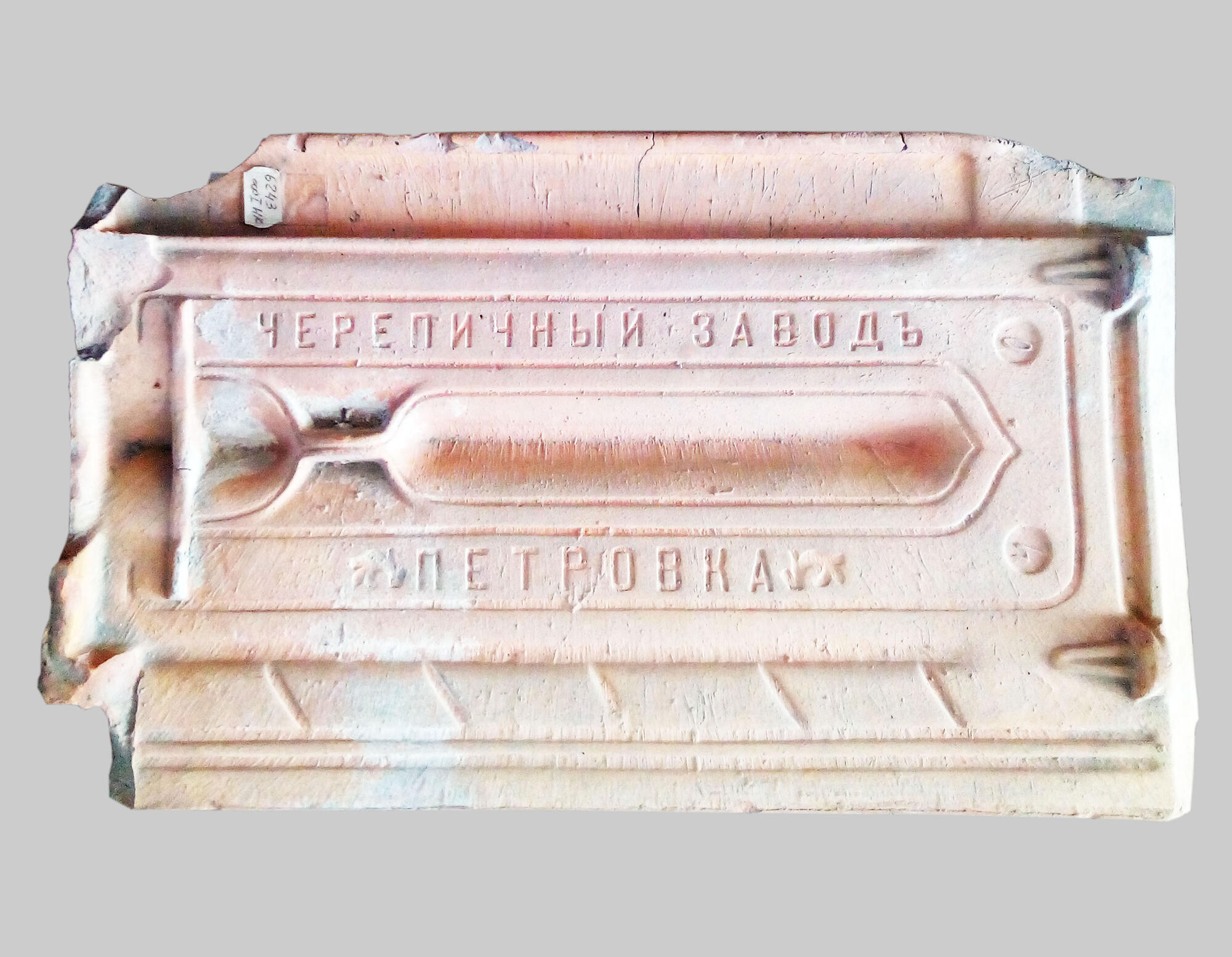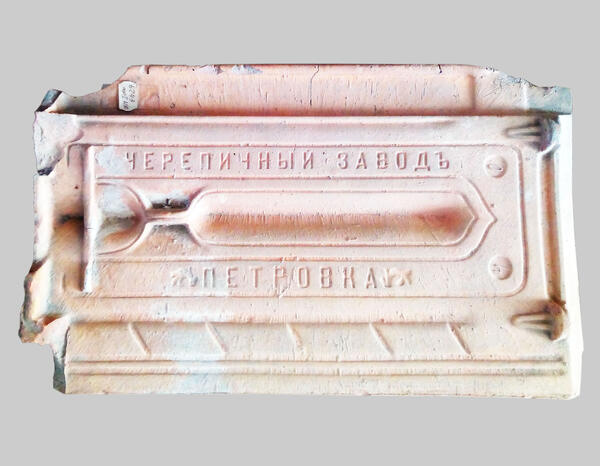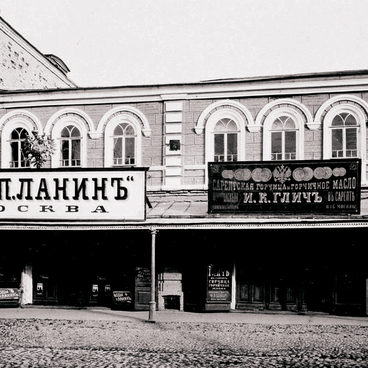One of the first factories that opened in Sarepta was the brick and tile production needed for the settlement under construction. The colonists brought the tradition and technology of making ceramic tiles from Europe.
At first there was Johann Niedenthal’s brick and tile factory operated in Sarepta. However, the roof tiles of Sarepta houses proved to be short-lived. Due to frequent temperature fluctuations in winter, the tiles cracked, so the Sareptians began to replace the tile roofs with wooden ones.
Due to a decrease in demand, local pottery and ceramic workshops began to produce more demanded products, for example, dishes and containers for Sarepta balsam. So the imported tiles were used during the construction of the station settlements of the Tsaritsyn - Tikhoretskaya railway, passing near Sarepta.
Tiles were widespread only in a few regions in the Russian Empire - the Baltic States and Ukraine (Little Russia). A plant in the village of Petrovka near the Ukrainian Nikolaev was one of the largest tile factories in Russia, and after in the USSR. The plant was built in 1900 and exists to this day.
The Petrovka Plant that was state-of-the-art outfitted that time produced up to 3.5 million pieces of tiles of various grades and shapes per year before the revolution. The plant was awarded the Gold Medal “For Diligence and Art” at the All-Russian Industrial Exhibition in 1910 in Odessa for the excellent quality of products.
Ceramic tile has been known as a construction roofing material since ancient times. The earliest archaeological finds of tiles date back to the beginning of the Bronze Age - the third millennium BC.
Roof tiles have become widespread in Europe, where up to 80% of buildings are still covered with tiles. This was facilitated by its consumer qualities: durability, water resistance, frost and fire resistance.
The manufacture of ceramic tiles includes several stages. Clay is mined first. the clay should not be very greasy but not too sandy to get quality tiles. Foreign particles are removed from the clay by sieving, rubbing and grinding. Then the clay is given the desired shape, which can be flat, grooved, semicircular, to cover the ridge of the roof. After that, the workpiece is dried and baked in a special oven at temperatures above 1000 ° C. Often, before baking, the workpiece is coated with a glaze or other compound to give the tiles the desired shades or strength.
At first there was Johann Niedenthal’s brick and tile factory operated in Sarepta. However, the roof tiles of Sarepta houses proved to be short-lived. Due to frequent temperature fluctuations in winter, the tiles cracked, so the Sareptians began to replace the tile roofs with wooden ones.
Due to a decrease in demand, local pottery and ceramic workshops began to produce more demanded products, for example, dishes and containers for Sarepta balsam. So the imported tiles were used during the construction of the station settlements of the Tsaritsyn - Tikhoretskaya railway, passing near Sarepta.
Tiles were widespread only in a few regions in the Russian Empire - the Baltic States and Ukraine (Little Russia). A plant in the village of Petrovka near the Ukrainian Nikolaev was one of the largest tile factories in Russia, and after in the USSR. The plant was built in 1900 and exists to this day.
The Petrovka Plant that was state-of-the-art outfitted that time produced up to 3.5 million pieces of tiles of various grades and shapes per year before the revolution. The plant was awarded the Gold Medal “For Diligence and Art” at the All-Russian Industrial Exhibition in 1910 in Odessa for the excellent quality of products.
Ceramic tile has been known as a construction roofing material since ancient times. The earliest archaeological finds of tiles date back to the beginning of the Bronze Age - the third millennium BC.
Roof tiles have become widespread in Europe, where up to 80% of buildings are still covered with tiles. This was facilitated by its consumer qualities: durability, water resistance, frost and fire resistance.
The manufacture of ceramic tiles includes several stages. Clay is mined first. the clay should not be very greasy but not too sandy to get quality tiles. Foreign particles are removed from the clay by sieving, rubbing and grinding. Then the clay is given the desired shape, which can be flat, grooved, semicircular, to cover the ridge of the roof. After that, the workpiece is dried and baked in a special oven at temperatures above 1000 ° C. Often, before baking, the workpiece is coated with a glaze or other compound to give the tiles the desired shades or strength.



